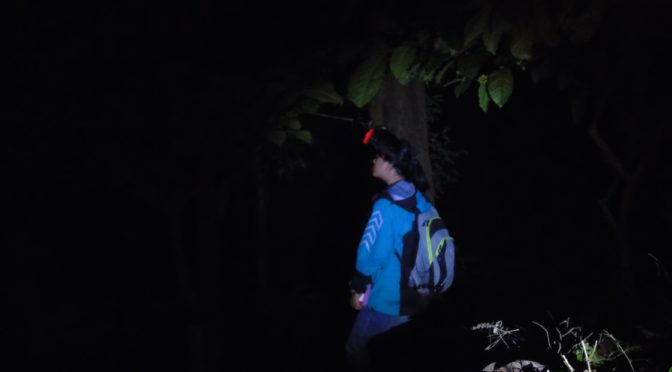Whoop, is it sunrise or sunset in Cipaganti? My watch told me it’s morning, but my body asked me to stick into the bed. I walked down the hill while watching the sun slowly climbing up to the sky, giving a lovely warm morning spirit for local people to go to their field, or the bright smile of kids walked to school. I breathe utterly different air, a very fresh one since leaves are starting to generate oxygen and I’m in a middle of remote area isolated from industrial pollution. That’s what it feels like after having a second shift of slow loris observation.
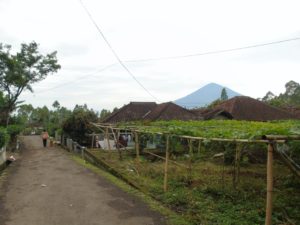
Hello everyone, so my name is Tungga, and it’s been two years since the last time my body shifted into nocturnal. How come a human become nocturnal? The story began when I was doing my bachelor study about the diet of wild Javan Slow Loris in Kemuning, Central Java. I did a behavioural observation of Javan Slow Loris by following lorises from the time they waked up until they go to sleep. Since Slow Loris is a nocturnal mammal (it means they active in night time), I have to adjust my body to wake up in the whole night time.
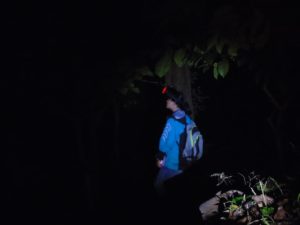
It was hard at first, to familiarize myself with night ambience and low light, plus efforts to focus when I supposed to fly high and fall into my deepest dream. Not including the cold air, my Goodness! But, behind that efforts, the beauty of nightlife is waiting to be discovered. Once my body gets used to that nightlife, I saw a whole new world, something extraordinary, a vivid and breathing ecosystem.
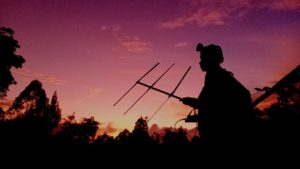
My eye began to habituated with subtle movements such as wings, feet, hands, or belly. Being nocturnal also allowed me to hear a completely different noise, a symphony of nocturnal wildlife, from up at the canopy to down close the water. However, I’m not going to say that I’m becoming a superhuman with keen sense (lol), but exploring and observing the field at night is a totally a terrific experience.
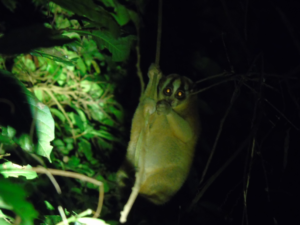
The same excitement now that I felt for coming back again in the fantastic team of Little Fireface Project (LFP). The first time I came to LFP was in 2016 for a short course to get training for Javan Slow Loris behavioural observation. That was the first time I’m in love with the Slow Loris and their cute flare eye. What I refer as flare eye doesn’t mean if they breathe fire or ignite fire every time they blink, it means that their eye reflected light, so it looks like two little fire. I used a special red torch when I did observation. Thus, the loris didn’t get bothered by bright light such as yellow or white.
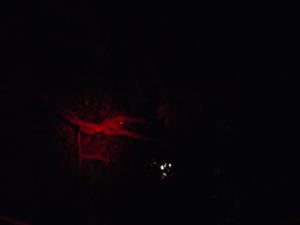
Now I am here and officially become part of LFP’s team. It is really a delightful chance to work together with people from around the world with an incredible passion for conservation. As the tagline said “Saving the slow loris through ecology, education, and empowerment”, the team here in LFP are not only doing the field and ecology-related activity but also about engaging with local people and becoming a part of the society (in a day time of course). Here in LFP, we did a fun and educational activity such as Nature Club with kids, Games and Socialisasi with a complete team of Trackers, Volunteers, Staffs, also tons of people from villages! So exciting! However, the day time activity is not always about social engagement, it can also be about checking habitat, camera trap checking, coffee pollination, climbing tree, and many exciting activities.
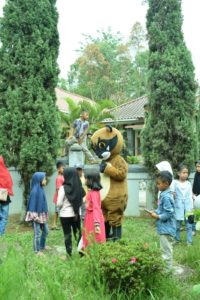
Coffee Sosialisasi for SLOW2020 week. The kids were looking for treasure as a learning media of conservation.
So yes, sometimes I’m doing things in the day time (diurnal), sometimes I’m nocturnal. Either way, I really loved it!

